How to Prepare for Summer Hailstorms and Wildfires - PODCAST TRANSCRIPTION
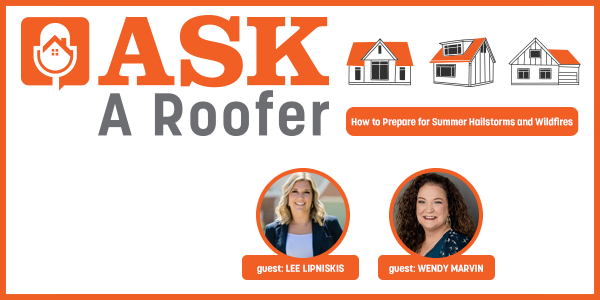
Editor's note: The following is the transcript of a live interview with Lee Lipniskis and Wendy Marvin. You can read the interview below or listen to the podcast.
Megan Ellsworth: Have you ever had a question about your roof and didn't know who to turn to for answers? Are you interested in learning more about one of the most important aspects of your home? Not to fret, the AskARoofer Podcast is here for all you home, and building owners. Join us as we talk with industry experts, roofing contractors, business owners, and more about all things roofing. And remember, ask a roofer. Hello, everyone. My name is Megan Ellsworth.
Lauren White: And I'm Lauren White.
Megan Ellsworth: And we are having too much fun already on the AskARoofer Podcast because today we are joined by Wendy Marvin, and Lee Lipniskis. Hi ladies, how are you?
Wendy Marvin: Hey.
Lee Lipniskis: Hey, hey, hey.
Megan Ellsworth: So why don't we just dive right in? And Wendy, we'll start with you. Why don't you just introduce yourself, and Matrix Roofing?
Wendy Marvin: All righty, dity. I am Wendy Marvin. I am the CEO and founder of Matrix Roofing and Home Solutions, or Matrix Roof and Home, depending what you want to do. Vancouver, Washington, predominantly a residential construction company, but we also do a little bit of commercial, too.
Megan Ellsworth: Fabulous. Lee, why don't you tell us a little bit about you, and Levello?
Lee Lipniskis: Hi, my name is Lee Lipniskis, and I am the CEO and founder of Levello Construction. We're a residential general contractor in Denver, Colorado. We focus strictly on exterior roofing, gutters, siding, and paint.
Lauren White: Wonderful, so glad you both are here.
Lee Lipniskis: Thanks.
Lauren White: So hail and wildfire season are upon us. We already heard that, in Colorado, you guys are kind of smoked in right now. So, with that being said, what are some ways homeowners can prepare their homes for hail and fire, or building owners too?
Wendy Marvin: We're not the ton of hail, so we'll talk more with Lee about that kind of stuff. But I know wildfires hit us hard this last year. One of the things that we heard a lot about, and talked a lot about was a WUI area, W-U-I, Wildfire Urban Something.
Lauren White: Interface?
Wendy Marvin: I should know that off the top of my head. Yeah, there you go. That being that they expanded that area, and we kind of got designated in areas we've never been before, it opened up a new conversation about how to protect your home. And one of the main things that came out of that was intake vents, and focusing on using specialized intake vents that have a mesh inside of them that don't allow sparks to come in. Because if the house is going to burn, and the fire is upon you, there really isn't a lot you can do. But if you're in a situation where, like what happened with us, there was a wildfire across the river, and nobody thought it would cross the river, and it did. Because we found out that sparks can fly up to three miles.
Lauren White: Wow, dang.
Wendy Marvin: And so, what you want to do is protect your home in that manner. And so, from the sparks standpoint, the intake vents are going to be the main place that they would enter the home, and then smolder, and then cause fire.
Megan Ellsworth: Wow.
Lauren White: That was good to know.
Megan Ellsworth: Three miles.
Wendy Marvin: Crazy.
Lauren White: I didn't know that.
Megan Ellsworth: Lee, with the big hail storm we just had in Denver, what's a good way homeowners ... because you work with residential homeowners ... How can they prepare their home for hail?
Lee Lipniskis: Yeah, so I think that I would say overall to prepare your home for hail season ... Because there's really no way that you can prepare your home for hail, but you can prepare your home for the rains that come in, and storm season. And so, I want to touch base just really quickly because we had those Marshall fires, if you remember before, and that just really smoked an area out by Boulder and Boulder County that they were not prepared for those fires. And so, there's two quick things that I have taken away from people I've talked to. Those intake vents are super cool, but also this ties into prepping your home for spring or hail season, right? Clean out your gutters. That's one of the biggest things that you can do to prepare for rain. We just had all of that rain. We even had rain and hail in Colorado like that for four years. And so, I caught so many calls for roof leaks, and I'd go out, and look at it, and a lot of the times it's clogged gutters, and if you have debris in your gutter, and that ... What did you call it, Wendy?
Wendy Marvin: Cinders?
Lee Lipniskis: The cinder that travels three miles, if you have stuff in your gutters, and it's up there, it could light up like that. So, definitely cleaning out your gutters, making sure that they work properly is huge. And also, doing yard maintenance. Brush things away from your home. Clean out bushes or landscaping to get those things away from your home, which will help as well. You can't really do anything to protect your home from hail, but I think that water, which comes with hail, is more important to protect your home with. Have your roof checked, make sure things are sealed, things are caulked. Gutters and downspouts are a big one that we've seen so far.
Wendy Marvin: Well, and identifying, in that roof inspection, cracked vents, cracked pipe flashings, those are the number one ways we start to see leaks, too. So ...
Lee Lipniskis: Chimney flashing is a huge one, making sure that's done properly. So, just homeowner maintenance. I think people forget about their roof until something happens. So, you really should have somebody come out, and look at your roof at least once a year. Or when you get your gutters cleaned out, have the gutter crew just pop up there, and take a look.
Wendy Marvin: On your point about the chimney, too, really quick. We're in a weird area where we're a pretty tepid climate, and a lot of people don't use their fireplaces. And so, they have these brick fireplaces that they build with the house, and then they never use it. And the fireplaces eventually ... The chimney on the outside, the brick loses its sealant. And so then, in our area, we get a lot of leak calls, especially when we have days upon days of rain at the same. The bricks get saturated and the water starts running in the house. So, another part of maintenance would be ,when we're up there doing the cleaning and inspection of all that stuff, it's an extra 20 minutes, half hour for us to do a new sealant on the bricks that lasts another couple years, and just another part of maintenance is huge. And I think we don't talk a lot about that. We don't teach people how to maintain their homes.
Megan Ellsworth: Yeah, I couldn't tell you half the things you guys just mentioned about maintaining my home. So, that's Example A. So, what are some first steps home, and building owners should take after a storm or a wildfire comes through?
Wendy Marvin: I always worry about getting us out there first because a lot of people say, "Call your insurance company first." But I think it helps to have the roofing company out there first, so that the level of damage, and you can have that assessment. Because we've had people call us, and we get out there, and they're like, "Oh, I already involved my insurance company, and blah blah blah, and it's a $500 repair." And then, they've already made that claim, and some insurance companies are good, and some insurance companies use that against you. So, I always say, "Call the professionals first, don't do anything." I know people want to take it into their own hands, and go up, and do something, but that would be an active crime site in my opinion. And if you do something to alter it, sometimes you can compromise it if there really is an insurance claim. So, my first thing would be call a professional.
Lee Lipniskis: Absolutely, yeah. Similar situation, I went to look at a home the other day, they filed a claim, and had me come out, and take a look at the roof, and it was very minimal damage. And if I would've been up there first, I would've said, "Don't do it. It's probably going to be under your deductible, and you don't want to have that claim on your policy." So, definitely, I would say ... The first thing I would suggest to a homeowner is, "Take some pictures of your own." How many times have you seen pictures of hail in hands? But sometimes when a big storm happens, and there's a lot of debris everywhere, their first instinct is, "Ooh, I got to clean up the yard, or sweep the driveway, or I have all these granules coming out of the downspouts, I got to get rid of those." So, they sweep them up. But that's all kind of evidence and backs what the storm really was. So, I think my first thing I tell homeowners is, "If you see paint chips in your driveway, take photos of the exterior, so that you can show your adjuster, "Hey, this is what it looked like, but I did my own due diligence, and cleaned up my yard, and cleaned up my home the best to my ability, and mitigated those damages."" That's probably the first thing I would say. And then, have us go look.
Lauren White: This is very good advice. Okay, maybe this ties in more with hail, but even with smoke damage, how can you determine if you need an entirely new roof, or maybe just a few repairs, or how should a homeowner find that out?
Lee Lipniskis: Yeah, oh my gosh, I love this question. I've been getting asked this question a lot lately going to look at roofs. Because in a previous life before I owned Levello, and worked for a construction company, I was an adjuster for about five years. And so, I was on the other side of things. And so, now, when I go and look at a home, that's the brain that I turn on is through my adjuster lens, not necessarily a contractor. And so, for people out there who don't know or haven't been through this, in regards to roofing specifically, your insurance company will come out, and they'll do what's called the Test Square. And they'll mark out on your roof in chalk, brackets of a 10 by 10 area, 10 foot by 10 foot area. And they see, "Okay, how many hail hits are in this test square? Is there one or are there 20?" Depending on how much damage is in that little test square will tell them if your roof really needs to be replaced or repaired. They do that on all directional facing slopes, north, south, east west, so not on every one of them. But it kind of gives them a better idea of what really is going on with your roof.
And they look at soft metals, and are there dents there? And it also depends on the age of your roof. They have this factor that they use. I think it's one, 1.5, and two. And the older your roof, the higher the factor is. So, let's say you have, I don't know, five hail hits in your test square, but your roof is 20 years old, they might multiply it, because it's harder to repair. Every company is different, but that's the lens that I look at when I get on a roof. I look at soft metal first, and then I kind of do my own visual test score. I don't mark anything on the roof 'cause I don't want to interrupt what an adjuster would do, but is that helpful?
Lauren White: Yeah, no, that's so helpful, yeah. Wendy?
Wendy Marvin: Yeah, yeah. No, she covered it. We're just in such a weird spot as contractors, because Lee has experience as an adjuster. I have experience in the insurance industry too, and we want to help. But it's really important for the homeowners to understand that we can't do the claim for you, and so, getting those measurements, getting that information. But once they come back with a determination, sometimes we can be supportive, and helpful in helping them understand about repairs, helping them understand that, yeah, we can repair this. But to Lee's point, it's a 20-year old roof, and it's going to look like a ladybug top by the time we're done. And so, it's not going to be a full actionable repair. It has to be a replacement. So, we can advocate as a professional, and argue help get the most for the money, but we just can't do it for them. So yeah, that inspection part is important.
And then, just understanding how the process works, like if it's leaking, we need to tarp it for you. It needs to be ... Lee mentioned mitigation. They call that ... If you have a vulnerability on your home, and you don't take measures to stop further damage, they can deny that kind of stuff. So, just want to be sure that we're covering what we need to cover, and let them do their job. I don't know about you guys, Lee, but we still have people ... They won't even climb on the roof. So, a lot of times they're relying on our photographic evidence, which we're really thorough about, and professional. It matters how you present as a company to the insurance company. If you come across as professional, give them what they need, sometimes they just say, "Okay," and walk away. It's just a weird little world, and like Lee said, it varies from company to company. We want to be your partner, and we want to be a partner in that process.
Megan Ellsworth: How does a homeowner get insurance involved? Once you've come, and inspected the roof, do they just contact their adjuster, and they come by, and tell you what the gist is, and then the homeowner goes back to you, and says, "Let's do this thing?"
Wendy Marvin: We actually have direct communication with the insurance companies, a lot of times. The initiation of the claim is always the homeowner. Sometimes they call their agent. Sometimes they call the company direct. That varies depending on their policies and who it is. Once they realize that that's what they want to do, then they initiate a claim. They get a claim number. Documentation of that kind of stuff is really important because again, it's all going to tie back to that as we report on it, and then it just moves forward. A lot of times, having the homeowner in the middle of the communication is messy. And so, we speak to insurance companies directly a lot of times just to stop confusion.
Megan Ellsworth: That's nice. Yeah, I'm sure there are a lot of first-time homeowner out there listening to this that have no idea what to do, and are looking for tips, and advice, so ...
Wendy Marvin: Well, and it's scary. You're usually panicked when this is going on. And so, yeah, just trying to have notes, and have your head about you while it's going on.
Megan Ellsworth: Exactly.
Lee Lipniskis: I think it's important to note, Megan, that you buy insurance through an agent. So, like Wendy said, you either call them, your agent, or call, let's say, State Farm, Farmers, whoever, directly to file a claim, and then they assign an adjuster. The adjuster and the agent are actually in two different offices. They don't work out of the same office, and they're completely different departments. So, when the adjuster comes out, and assesses the damage, and writes the report, and puts the notes in, a lot of the times the agent cannot see that. They're two completely different departments. So, that's why it's important to ... Hopefully people have a really great agent who's involved, and there's a lot of really good communication between the contractor, and the adjuster, and the homeowner. You know what I mean? It's almost like a trifecta in that regard. If there's somebody who's listening, that's helpful.
Lauren White: And what you're saying too, I mean, you're going to have different terminology than me as a first-time homeowner might not know. But insurance and roofing companies, that's your lingo. And so, having someone who can help you, and make sense of everything, and then come back to the homeowner, and explain it in their terms that they understand.
Lee Lipniskis: I think it's important to note that when a storm happens, and let's say it's a big one, and you have ... like right now in Colorado, it's just crazy damage in certain situations. There's broken windows. Trees are on the ground. Everything was green, and now the leaves are everywhere, and there's granules everywhere. That's frightening for a homeowner who's never been through that, where it's their first time filing a claim. So, it's really important to hire a contractor who not only knows what they're doing, but has a calming presence, and will be there for you, and walk you through it, and kind of have your back, and say, "Hey, I got you. I understand this is a lot. It is a lot, but I'm here for you. Let's take it step by step," instead of having somebody who comes out, and is like, "Oh my God, you have so much damage. This is crazy. Your roof needs to be replaced now." You know what I mean? [inaudible 00:16:15]
Wendy Marvin: Yeah, and to Lee's point, we're talking about females in the industry, there's a benefit right there for females in the industry.
Lee Lipniskis: 100%.
Wendy Marvin: Because we're empathetic enough to understand where the homeowner sits, and not interested in upselling them or frightening them further just to get more money from them.
Lee Lipniskis: Right, that's important to note.
Megan Ellsworth: Kind of building off of that, why should homeowners in the Portland/Vancouver area, and the Denver areas turn to Levello and Matrix Home Solutions for help?
Wendy Marvin: I think female-owned is a unique value proposition. I think that we think differently. I would say good contracting companies are not sales organizations, and we're not out to screw you, for lack of a better word, out of every dollar that we can get from you. We're out to create relationships. And so, I've heard a lot of times in our world from people that say, "Well, a roof is a one-time thing. You're only going to do one in your lifetime, so what do I care?" And I'm thinking, "Man, I have customers I've done five roofs for." I have one poor guy that had a tree fall on his house three times, and we've helped him every time. And talk about bad luck, but it's sad. [inaudible 00:17:28] Yeah, it's sad. But I think we do. I think we bring a different lens to the table. I think that we bring an empathy for understanding what it's like to be a homeowner, and to Lee's point, a calming nature in general of just we want to help. We want to make it better. We don't want to make it worse or take advantage of people.
Megan Ellsworth: Beautiful.
Lee Lipniskis: Very much so. Wendy said it. We are general contractors. We are not a sales organization. We're here to help people, and put them back to pre-loss condition in regards to insurance. That's why I'm there. I'm a fixer, I'm a problem solver. And I feel like that is really what we do. And I think in regards to why somebody should use my company, I mean, I feel like it's a no-brainer. But I have that background of insurance knowledge. And as an adjuster, I've seen both sides, and there's a reason why I'm not on the insurance side anymore, because I want to help people more. I want to solve their problems, and be a positive in their life. So, Wendy touched on everything else. I mean, I could second everything that she said, but we're just different.
Lauren White: Yeah, and so with that, what are some of your other favorite things about being a woman-owned construction company?
Lee Lipniskis: You guys know me pretty well. I'm not quiet. Neither is Wendy, okay?
Wendy Marvin: I am so quiet and innocent. Stop it.
Lee Lipniskis: I always keep going back to I want to help people. As a woman, I feel like ... I mean, as just a human being, I want to raise the construction industry. It's part of why I started my company. I feel like sometimes we get a bad rap, and if I can just change the mind of one person in regards to how they feel about the construction company, then I'm successful. But I love being a girl in this industry. I think it's so fun. I love when people look at me, and think, "Oh, you're getting on my roof?" or, "Oh, is your boss coming to look at my roof?" Or I've had people recently take pictures of me on a roof, which I think is really funny. I don't understand that, but okay. And they love my yard signs because they have my avatar on them. So, I feel like it helps us stand out, and people trust us. That's it.
Wendy Marvin: That's the key for me is ... Lee said it in a roundabout manner, but it's like a ... We're not me contractors, we're we contractors. So, I think that we're so much more collaborative. The time that Lee and I personally just have spent sharing things, and talking about best practices, and she's talked about what she's doing, I'm talking about what I'm doing, we do that in our industry. And it didn't used to be that way. It used to be very cutthroat, and closed off, and I feel like the female presence is just really bringing a lot of that collaboration and caring. And they may not want to play in our sandbox, but what they're realizing is that ... Finally, I think they're realizing that that females make a lot of these decisions in the sales world. And when you tick somebody off, when you walk in the door asking where their husband is, maybe they don't have a wife for god's sakes.
It's just, that old world thought process is just more harmful than good. And when Lee and I show up, my job is to create trust over an invisible process. And yeah, they see the shingles, but they don't know what we do underneath. And we do everything we can to be transparent. I don't try to mansplain to people, and puff myself up in their presence, and make me look so good while I'm putting them down. I try to really break our information down to digestible bites, and give them what they need to be able to understand our process to the level that they want to understand. Some people don't care. I mean, I really think we're at a place ... I've got customers who would buy a roof online, and never see us, and don't care. Then there's the other side of it that there are people that still want us to pick up a check because they don't have an email address. So, we've got everything in between and back again.
Lee Lipniskis: That's so true. That's so true.
Wendy Marvin: It's an invisible process that we do. And the more that you can do to earn trust, and be transparent about what you're doing, and tell them what you're going to do, and then do it. When you say you're going to do something, and then you betray them, that's not good either. So, I just feel like the females in the world are really changing our industry, and I think that that's our focus is industry elevation, and making things better.
Lee Lipniskis: I have two examples of this that have happened to me since the Colorado storm. I've been in the industry a while, been very involved with National Women in Roofing in Colorado. I had a direct competitor of mine, female-owned roofing company. She's up north. We met in a bathroom at a training, didn't know each other, just met in a bathroom, and then never really spoke after that for a while, and then connected on Facebook. She needed a gutter crew. My gutter crew needed work, because I wasn't keeping them fully busy. I gave her my gutter crew, and said, "Hey, use these guys. They're fantastic." She used them. We reconnected during the storm, and messaged each other on Facebook. Again, I've never really talked to this person in public or in-person, and we were just so excited for each other, and saying, "Have a great summer, happy hail season. Whatever you need, let me know," is what she said to me. A direct competitor of mine is just as excited for me as I am for her to be successful. I don't feel like men do that, right? So there's one example.
The second example is a friend of mine, also female roofing company owner up north, called me right away. "Hey, how are you? Are you overwhelmed? What can I do for you? Do you need my crew? I know you're probably getting leak calls. Can you use my crew?" So we've been collaborating, and I'm helping her. She's helping me. And then, we just did some impromptu sales training last night until really late. But it was amazing, direct competitor with just this authenticity of, "We're going to do this. We're going to do it together, and we're going to be successful." It's just, I'm blown away. I woke up this morning so grateful for the relationships of women I have in this industry. And I mean, okay, can I keep going for just a second?
Megan Ellsworth: Yes.
Lee Lipniskis: This is how great National Women in Roofing is. Sarah, who owns True North Roofing, her top saleswoman, Tracy ... Shout out to Tracy ... gave me a lead from Minnesota, and said, "Hey, the person who lives in my old house has some damage. Can you go look at it?" So, I did that. Amy, in Chicago, had a volleyball friend who had a roof leak. She called me. So, it's like women who aren't even in this state trust me with their people enough to give me a lead. How cool is that? That's what I love about women in the industry is we call each other. We help each other out, and I feel like we should all be more like that. Now, I'm off my soapbox. Thank you for listening.
Wendy Marvin: That's not a soapbox. That's a reality of our world, and I feel like a lot of ... It's funny, generationally, just the difference in us is when I first came to the industry ... And I'm a baby compared to Heidi ... but we were elbows. We were all elbows with each other, because there was one seat at the table, and by God we were going to be the one to get it. And I think you have to be that kind of personality, in general, in our industry. Because it joke about it, but it's still not a hundred percent easy. It's still very much a struggle to be a female in our industry.
Now that has changed, and it is changing. And what we're doing is instead of begging for the one seat at the table, we're either making our own damn table, and they can come join us, or we're finding ways to gather to bring more seats. And I'll liken that to the fact that I'm lucky enough, I just got installed for the National Roofing Contractors Association, and got the phone call that I'm taking on the residential chair position. And that wouldn't have happened 10 years ago. And so, I think we're kind of rocking the world a little bit. And I just feel like Lee, and she mentioned Sarah, and just these people all over the nation that you guys have helped connect through AskARoofer, and Roofer's Coffee Shop, and some of the other things you guys do, we're making some big changes, and I love it.
Megan Ellsworth: Yay. And for everyone out there listening, these are the women that you want up on your roof, fixing it, and a shoulder to cry on when you have a tree fall through your house three times. So, please reach out to Matrix Home Solutions in the Portland/Vancouver area, and Levello in the Denver metro area. So, anything else to add on how homeowners can prepare for storm and fire season this summer?
Wendy Marvin: I think we've covered the gamut. I would look into that WUI area. I think that from the fire standpoint, they've expanded it in our area, and it does come with some additional insurance requirements, and some changes in liability. So, familiarize yourself with that. I think we have a link on our website at matrixroof.com where we've talked about that. So, it gives you some links to see if your address is in a WUI area, and then talk to your insurance professional. Because this is new enough. I don't think a lot of people know about it. And sometimes, you know, trust your insurance people to bring stuff to you, but sometimes you got to point it out to them, and let them know something's changed.
Lee Lipniskis: I would say in regards to the storms that are happening in the area, and people coming to knock on your door right after, just trust your gut. Don't feel pressured. You don't have to sign anything right away, and take some time to really think about the contractor that you want to use, and do your research. Look at their website, and ask around, and just trust your gut.
Megan Ellsworth: Well, thank you both so much for joining us. This has been a blast.
Lee Lipniskis: You're welcome.
Wendy Marvin: Thanks for having us.
Megan Ellsworth: Yes, we will have you on anytime. For all of those listening, please, again, make sure you go check out Matrix Home Solutions and Levello Construction. They are on the rooferscoffeeshop.com as well askaroofer.com. Lauren, we're signing off.
Lauren White: We are. Thank you so much.
Megan Ellsworth: Thank you so much. This has been the AskARoofer Podcast. Thanks for listening to the AskARoofer Podcast. Feel free to subscribe, and leave a review. Go to askaroofer.com to ask a question.




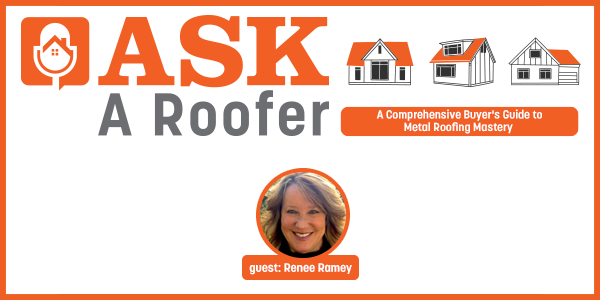
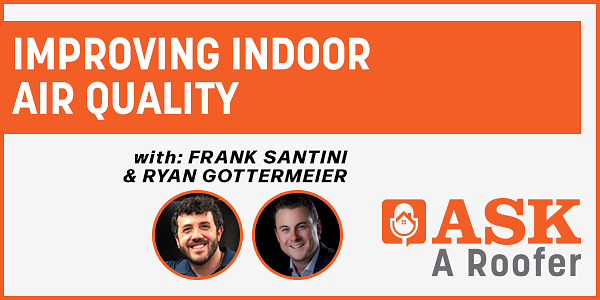
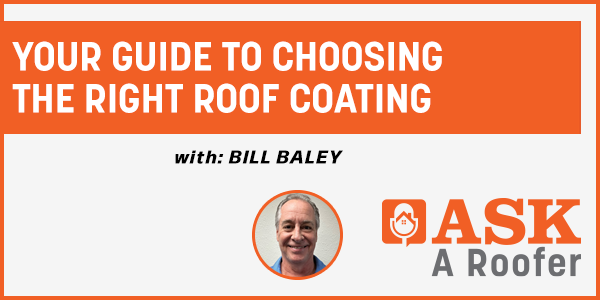


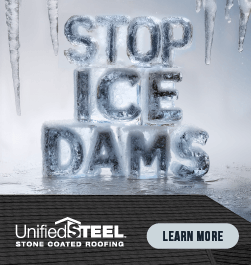



Comments
Leave a Reply
Have an account? Login to leave a comment!
Sign In